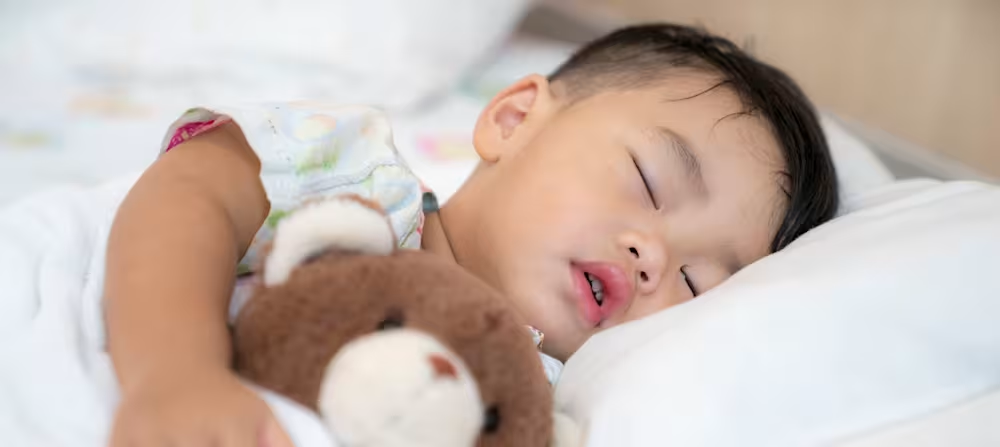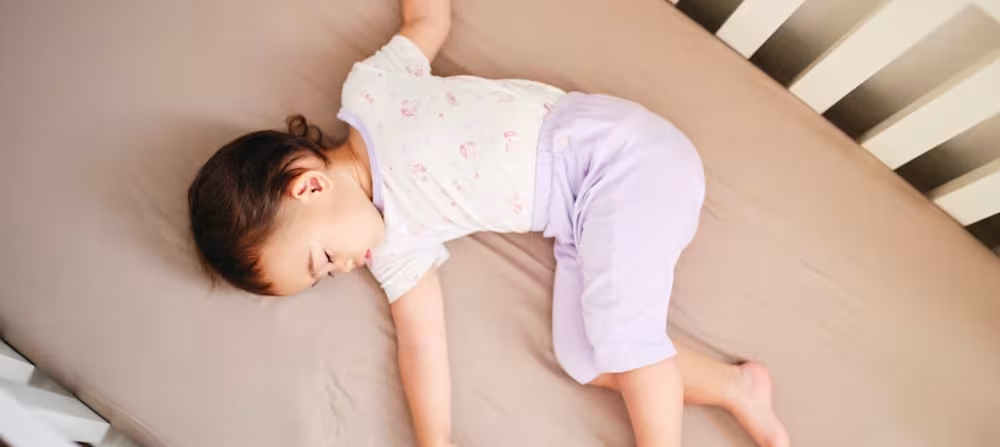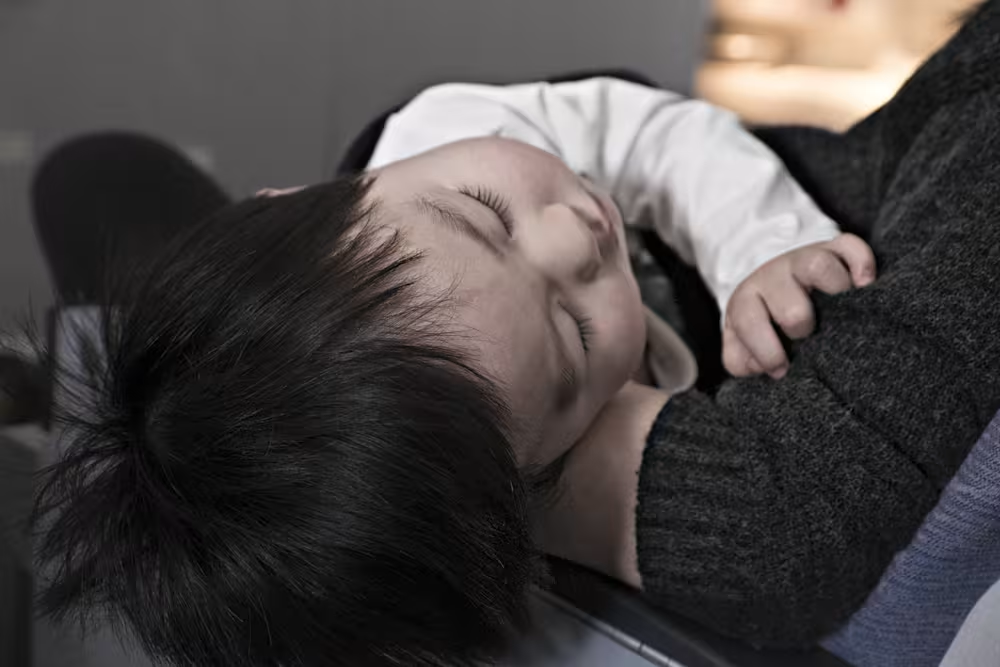How to wean your child from the pacifier
Updated Aug 14, 2025

The pacifier, binky, or dummy can be an for many families, helping to promote the natural calming sensation when sucking. However, some babies will never take to a pacifier, or for other families, it may even be the cause of some nighttime troubles!
If it’s working for you and your little one, then carry on! For now, you can try limiting pacifier use to nighttime and naptime so it serves as a good sleep cue. Once your kiddo is older you can tackle weaning from the pacifier.
In other cases, it makes sense to wean earlier. Maybe your baby hasn’t developed much of an attachment to the pacifier and you’d like to prevent it from becoming an issue down the road. Or perhaps your baby has developed a with the pacifier that has led to frequently disrupted sleep. Either way, weaning early or later, you may experience a few disrupted nights as your little one learns to fall asleep in new ways.
When to start weaning from a pacifier
The AAP and the AAFP (American Academy of Family Physicians) [] recommend reducing or stopping pacifier use in the second 6 months of life. The American Academy of Pediatric Dentistry (AAPD) [] supports caregivers in the decision to introduce a pacifier based on their little one’s needs and preferences. However, if your baby hasn’t taken to their pacifier or the constant need for an adult to replace it at night is becoming problematic, you may wish to wean earlier.
Some little ones may be more attached to their pacifiers and have difficulty weaning from them before entering preschool. Long-term pacifier use can increase the risk of dental malocclusion (misalignments of the teeth, such as an open bite, crossbite, or overjet). The ADA (American Dental Association) and AAPD recommend actively discouraging pacifier use before 3 years old with optimal weaning taking place when canines emerge (approximately 18 months). There is a decreased risk of SIDS as a benefit of pacifier use.
First off, consider how much comfort the pacifier brings your child. If it brings comfort, they can replace it themselves (typically 8 months or older) and if it brings no nighttime dramas then you may wish to wean later. Consider weaning when they’re 2 - 3 years of age and better able to understand that when it’s gone, it’s gone!
Around the age of 2.5, children have a better sense of awareness and it can be easier for them to understand changes in routine. They may not like it, but it’ll be much easier for this age group to understand the transition away from the pacifier than for the younger ones with a strong emotional attachment.
Just a head's up: If you are weaning before 3 years old, it may have an impact on naps. Some kiddos will stop napping prematurely if they have a pacifier association (your little one no longer uses it for self-soothing, but they rely on it in order to fall asleep) and the pacifier is taken away. This can result in early waking or insufficient sleep overall.
5 tips and tricks to wean your child from pacifiers
Option #1 The gradual approach
Remove the pacifier at bedtime only to start. Sleep pressure is greatest at this point in the day and so it’s easier to learn new skills then.
Once your little one is falling asleep without it at bedtime, you can move away from using it during night-wakings. After this, it’ll feel very familiar and you can try removing it for naps too.
If your child depends on the pacifier to fall asleep, you may find you need to help them fall asleep in other ways and assist more than you are used to doing. Ideally, this help will be temporary, so that we don’t form a new sleep association that disrupts sleep. Use a hands-on to help for the first few nights and then gradually fade your input, doing a little less each night.
Option #2 Cold turkey
Some children are quick adopters of new skills and habits and they may easily tolerate change. Equally, you may have a baby who just wasn’t that connected to their pacifier. You may want to consider going cold turkey. It’s also likely to see faster results than the gradual approach.
As it’s a short and sharp approach your baby is likely to protest more so it helps to be committed to this strategy from the outset!
Option #3 The story
Children from 2.5 - 3 years upwards have a greater sense of awareness []. It’s much easier for them to understand that when something is gone, it’s really gone.
Some children may be happy to “gift” their pacifier to another baby. They can wrap it up and pop it in the mailbox! Perhaps that baby will then send them a thank you note or little gift in return.
The “pacifier fairy” is also a nice option. Your child can offer the fairy their pacifiers, leaving them out, perhaps under a tree during the day. Distract your child for an hour or two. When they return their pacifiers have gone and there's a little gift waiting. Add some glitter for fairy dust if you want to add some sparkle and drama.
Option #4 Transition to a new comfort object
You may want to try transitioning them to something other than a pacifier for comfort. Perhaps a small muslin blanket, a lovely teddy as they fall asleep. Remember though, we want to keep the as they sleep when they’re under 12 months old.
You can introduce the transitional object during play in the day, include it during bedtime cuddles and have it there to comfort your little one when needed. When you decide to take the pacifier away, they’ll have another item that brings comfort and it may ease some of the tears.
Option #5 Let your child take the lead
It’s unlikely your child would take their pacifier throughout their whole childhood! Some may grow an attachment to other things, some may become disinterested and some may just happily give it up themselves. Perhaps this natural route feels better for your family.
Editor's note
All methods have the potential to be successful. When making changes to sleep the most important thing is to be consistent. If you’ve taken it away, then you’re going to have to see it through and not have it magically reappear when it gets tough. It's consistency that helps to form new habits and ways of settling.
What if I want to keep the pacifier?
If you’re happy to until they’re older, then from 7 - 9 months of age we’d recommend lots of practice finding and replacing their own pacifier during the day. They’re then more likely to be able to find it and replace it at night. It can be a bit of a game changer when you’re watching them on the monitor and they reach out, find it themselves, and pop it back in! You may also want to consider dropping multiple pacifiers in their crib so their chances of finding one are higher.
Weaning from pacifier FAQ
Share article:
Note: The content on this site is for informational purposes only and should not replace medical advice from your doctor, pediatrician, or medical professional. If you have questions or concerns, you should contact a medical professional.






